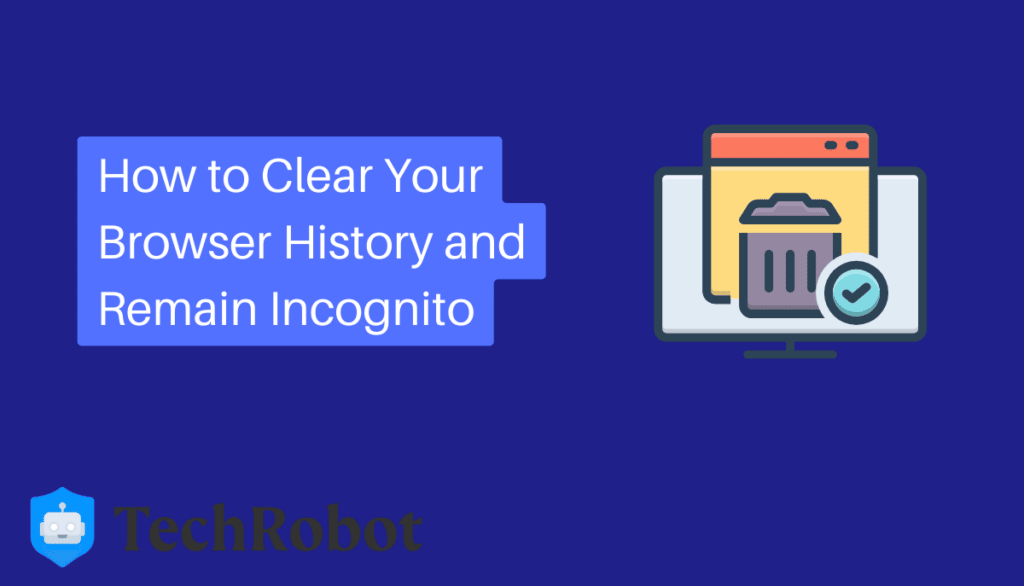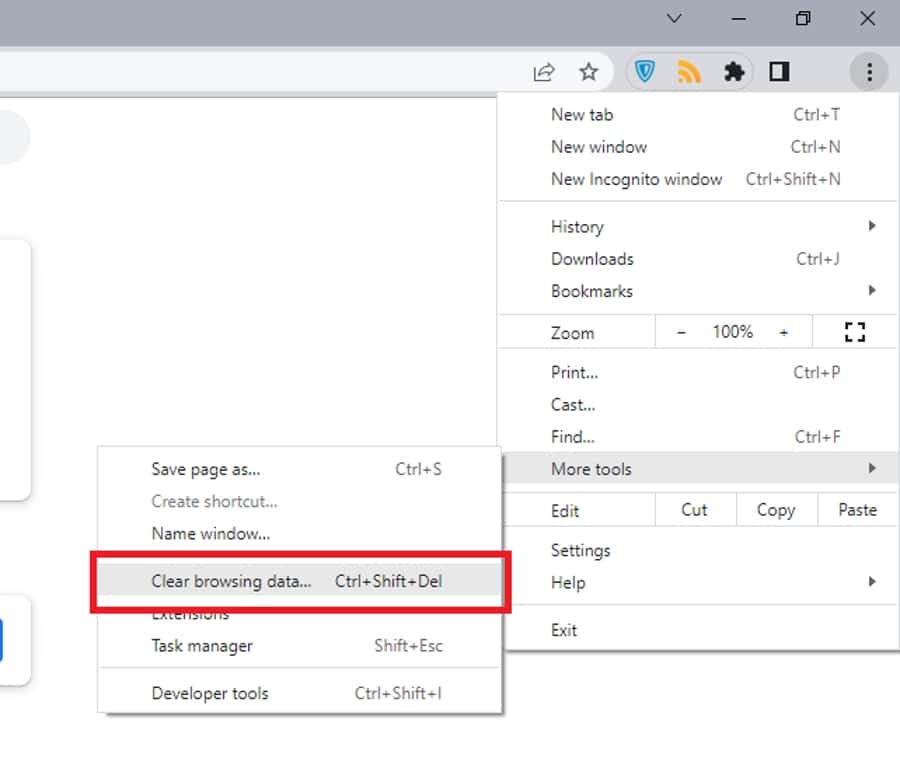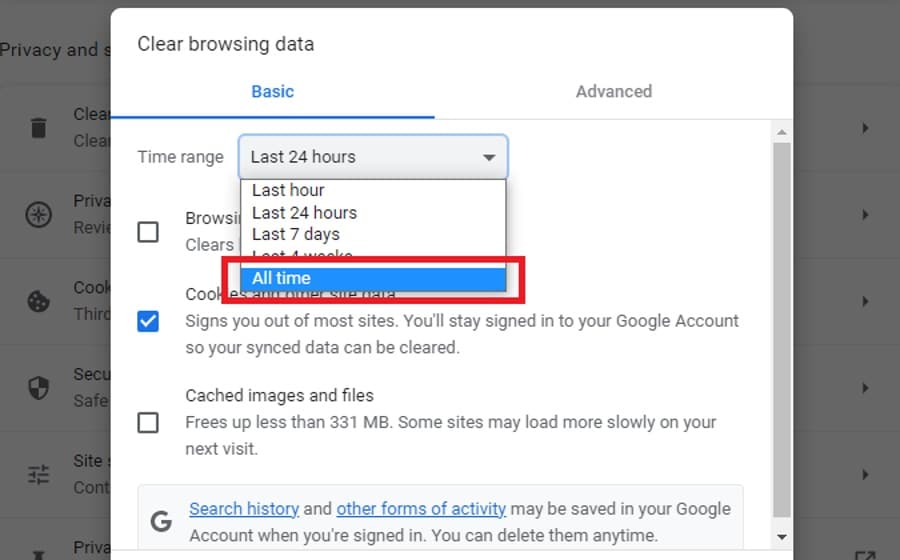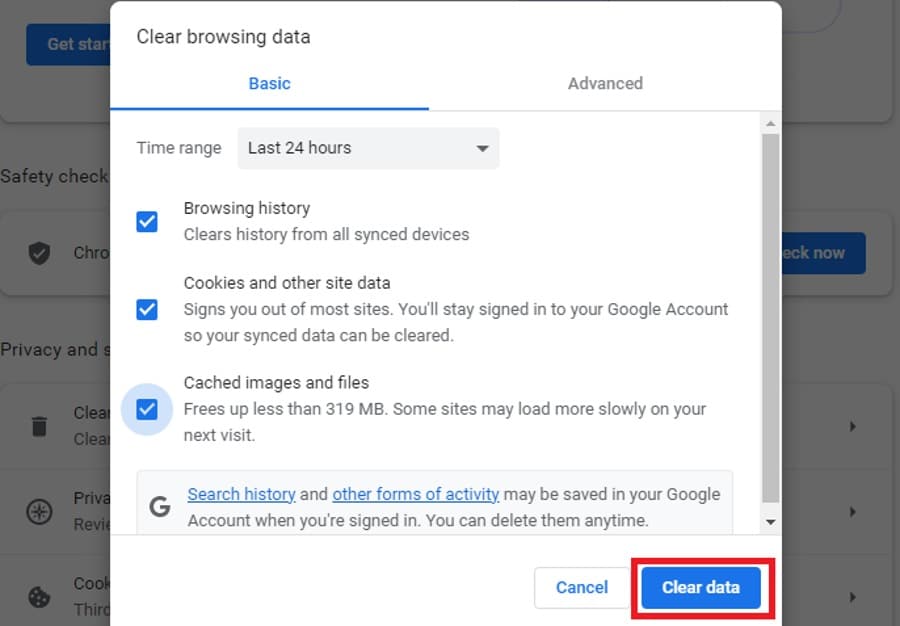How to Clear your Browser History and Remain Incognito?

Browsing online without making any effort to cover your steps seems perfectly harmless, right? Well, that’s until someone accesses your browser history or leaks your private information to the wrong people. Staying safe online requires maintaining good browser hygiene, and that involves regularly clearing your browsing history. You could activate the incognito window to keep your browsing patterns under wraps. But is this a fool-proof plan?
Sadly, no. You should know by now that no software is 100% secure. While incognito mode automatically deletes your browsing history from your browser, it doesn’t make you anonymous while you’re active online. Whoever runs your network can still see what you get up to. But not to worry. This guide shows you how to delete your browser history, so you remain incognito on any browser.
Why Should You Regularly Delete Your Browser History?
Holding onto your browser history isn’t the best move for the following reasons.
Protect Your Privacy
To most people, concerns with browser history have more to do with privacy than security, even though both equally matter. Your browser or search history is a window into who you really are. It reveals the sites you visit, images, search engines, files downloaded, and when.
The risk of your privacy getting compromised is even higher if you’re using a shared computer. If you don’t delete your search history, the next person who logs on can potentially see your entire browsing history! From your hotel reservation and booked flight ticket to raunchy content, nothing is off-limits.
Prevent Hacking
Even if you downplay the security aspect, when your private information lands in the wrong hand, it can cause problems for you. Masking your browser activity prevents hackers from tracking you and any unauthorized parties from accessing your online shopping or banking details. Depending on the type of data they manage to get their hands on, cybercriminals can use data they find to stalk, blackmail, or swindle money from you.
Speed
Lastly, clearing your browser history does wonders for your device’s overall performance. Excess downloaded cookies slow down your computer’s processing system. That’s because every cookie downloaded is another file your browser needs to search through to find the right one.
What Incognito Can and Can’t do For You
Browsing in incognito mode is one way to protect your internet privacy. Using this feature, you can browse the internet without a record of your activities being saved on the device. However, this glasses-and-hat disguise doesn’t completely cover your tracks as much as you’d like to think.
Even though your search history is deleted, your activities are still logged by the operating system. That means the network’s owner, whether it’s your employer or the hotspot owner, still has front-row seats to your internet activity.
Moreover, private browsing won’t stop web admins from monitoring the pages you visit, your search interests, how long you spend on each site, and any auto-complete forms you fill out. Also, the websites you visit, search engines, and your ISP can still track your activities as your browse incognito.
The Solution?
We’ve given you the pros and cons of browsing incognito, but what’s the way forward? The good news is it’s possible to view and delete not only your general browser’s search history but incognito mode history too. We’ll outline the steps involved on both desktop and different mobile browsers.
How to Clear Your Browsing History on Google Chrome
Since Google Chrome is the most popular browser used worldwide, we’ll walk you through how to delete your browser history. Mind you, this section explains the process of deleting your general browser history without activating incognito mode.
- Open the Google Chrome tab on your computer.
- Navigate to the Menu tab and click. (You can identify it with three dots located in the top right corner.
- Go to “More Tools”.
- Click the “Clear Browsing Data” tab.

5. Select the period for the data you’d like to delete from the options on the drop-down menu. If you’d like to delete everything, select “All-time”.

6. Double-check to see if the “Browsing history” box is checked. Manually check any other boxes for any other data you’d like to delete.

7. Click on “Clear Data”, and you’re done.
How to Delete Your Private Browsing History on Windows
The reason incognito or private browsing is not completely private is because of what’s known as the DNS Cache. This feature keeps a record of how you were connected to websites you recently visited. So, if you decide to activate incognito mode but aren’t willing to leave anything to chance, follow these steps to clear your private browsing history.
We’re going to use Windows as an example, but this process applies to all web traffic whether you use Chrome, Firefox, or Edge.
- Start by opening an incognito tab and visit a site you don’t typically use, for instance, LinkedIn.
- Go to Start and open the menu. Type “CMD” leaving out the quotation marks. Proceed to right-click the box and select “Run as an administrator”.
- A command will allow you to view your DNS Cache file directly. Type the command “ipconfig/displaydns>C:/DNS.text” minus the quotes and press Enter.
- Navigate to your C: drive file via File Explorer and open to DNS.txt file you’ve just created.
- Search for the LinkedIn file we mentioned in Step 1. It must appear despite you having been browsing incognito during that time.
- Go back to CMD, but this time you must clear the DNS Cache. To do this, type “ipconfig/flushdns”. Again, minus the quotes and press Enter.
- Lastly, press the Up arrow twice and hit Enter to refresh the DNS.txt file. If you reopen this file, you shouldn’t be able to see the previously visited site.
Important: Don’t be alarmed to still see entries in your DNS Cache even after you’ve completed the outlined process. That’s because antivirus programs and ad-blockers usually inform your computer to reroute traffic from dodgy websites.
Mobile Devices: Deleting Browsing History on Android, iOS, and macOS
Clearing private browser history isn’t a task for Windows users only. You can still face the same privacy and security challenges when you browse the internet using major mobile operating systems. Luckily, it’s very possible to view and delete your browsing history on mobile devices like Android, iOS, and macOS. We’ll detail the process involved in clearing your search browser on each of these mobile operating systems.
Android & iOS (Chrome)
- Open up Google Chrome on your Android or iOS device and type “chrome://net-internals/#DNS” in the search bar.
- Activate Chrome’s logging feature by tapping on the “chrome://net-export” link and clicking on “Start Logging to Disc”.
- Open up a new tab and visit a website you don’t usually use.
- Go to the previous tab, note the output file, and tap on Stop Logging.
- Tap on Email Log and send yourself the file.
- Open the log file in a text program, for example, NotePad.
- On your mobile device, go to “chrome://net-internals/#DNS” and click on DNS.
- Click on Clear host cache to erase any DNS cache entries
MacOS
- Click on Go, then Utilities, and navigate to Terminal.
- Enter the command “% sudo killall -INFO mDNSResponder>DNS.rtf
- Open the new DNS.rtf file using a text editor. Any websites you’ve recently visited should pop up here with a quick search.
- Enter the command “sudo killall -HUP mDNSResponder” in the termina, minus the quotes. This action clears your DNS Cache by killing the DNS management process.
Takeaway
Your search history can expose your online activities to third parties with access to your computer. You’re also in the firing line when it comes to cyberattacks. To maintain your privacy, regularly deleting your search browser is a good place to start. And so is browsing in incognito mode if you don’t want your search history saved on the device.
Unfortunately, the latter still has its limitations because your IP address and other critical information is still accessible. The good news is you can further view and clear your incognito browser history using the steps outlined here on any device—desktop or mobile. Try our handy tips today, and enjoy anonymous browsing without worrying about prying eyes.